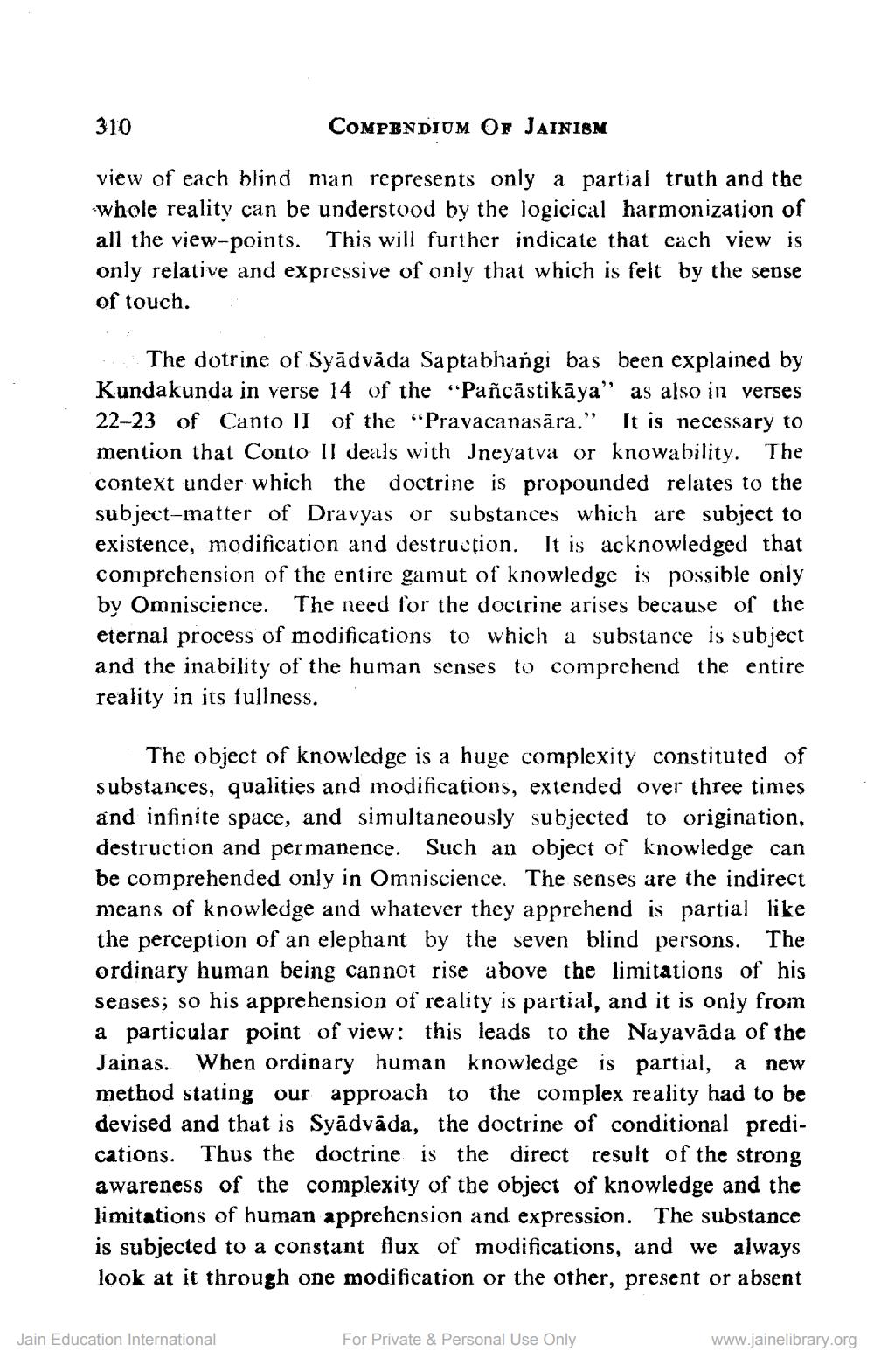________________
310
COMPENDIUM OF JAINISM
view of each blind man represents only a partial truth and the whole reality can be understood by the logicical harmonization of all the view-points. This will further indicate that each view is only relative and expressive of only that which is felt by the sense of touch.
The dotrine of Syādvāda Saptabhangi bas been explained by Kundakunda in verse 14 of the “Pañcāstikāya" as also in verses 22-23 of Canto II of the “Pravacanasāra." It is necessary to mention that Conto II deals with Jneyatva or knowability. The context under which the doctrine is propounded relates to the subject-matter of Dravyas or substances which are subject to existence, modification and destruction. It is acknowledged that comprehension of the entire gamut of knowledge is possible only by Omniscience. The need for the doctrine arises because of the eternal process of modifications to which a substance is subject and the inability of the human senses to comprehend the entire reality in its fullness.
The object of knowledge is a huge complexity constituted of substances, qualities and modifications, extended over three times and infinite space, and simultaneously subjected to origination, destruction and permanence. Such an object of knowledge can be comprehended only in Omniscience. The senses are the indirect means of knowledge and whatever they apprehend is partial like the perception of an elephant by the seven blind persons. The ordinary human being cannot rise above the limitations of his senses; so his apprehension of reality is partial, and it is only from a particular point of view: this leads to the Nayavāda of the Jainas. When ordinary human knowledge is partial, a new method stating our approach to the complex reality had to be devised and that is Syādväda, the doctrine of conditional predications. Thus the doctrine is the direct result of the strong awareness of the complexity of the object of knowledge and the limitations of human apprehension and expression. The substance is subjected to a constant flux of modifications, and we always look at it through one modification or the other, present or absent
Jain Education International
For Private & Personal Use Only
www.jainelibrary.org




